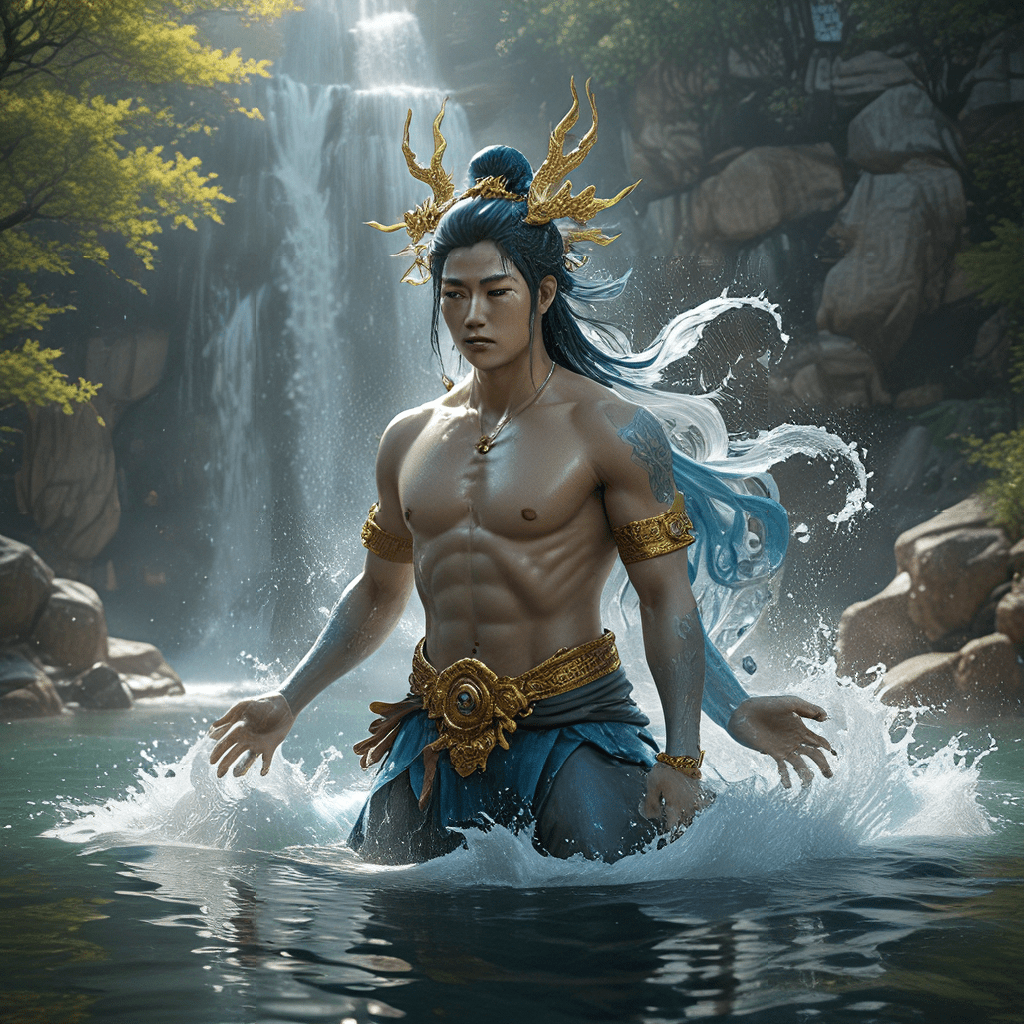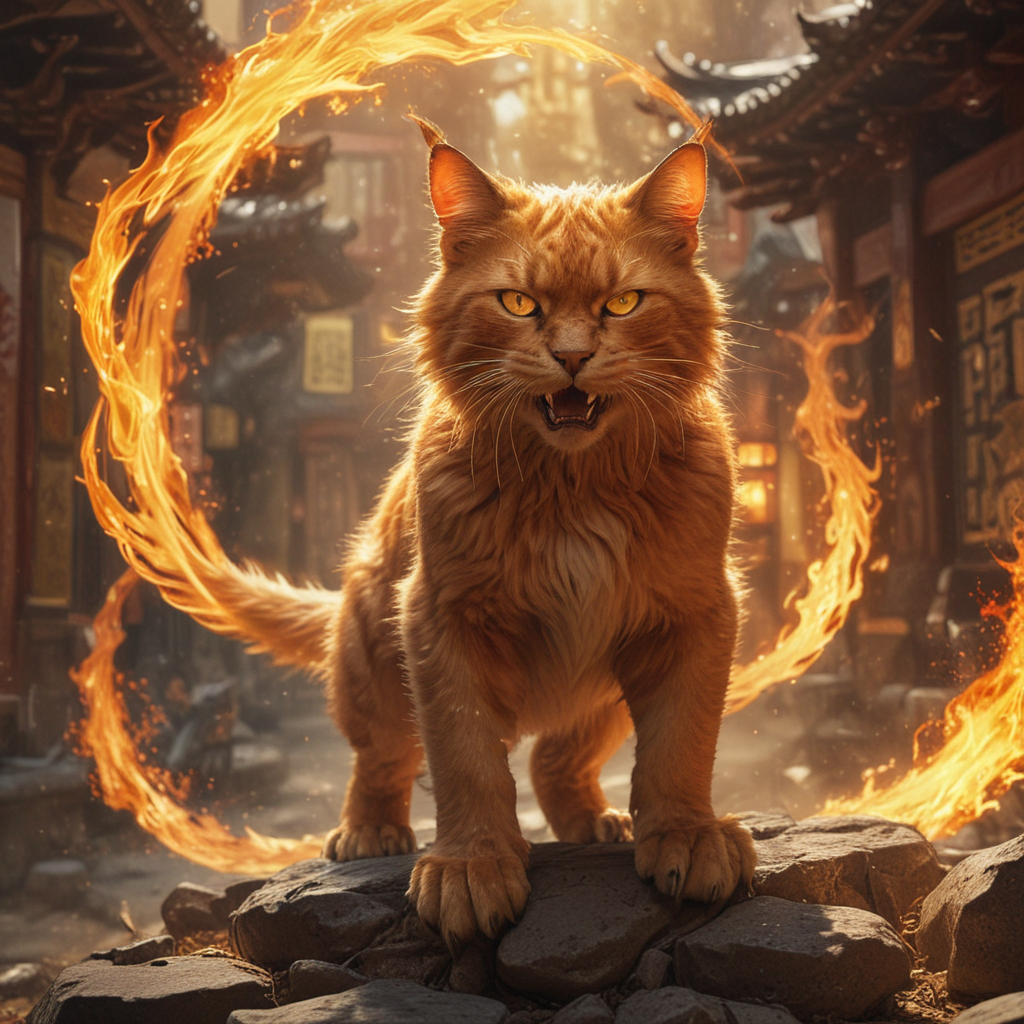The Legend of the Water God: A Deep Dive into Korean Mythology
Dive into the fascinating world of Korean mythology with the tale of the Water God, a powerful deity whose influence stretches across rivers, lakes, and the vast ocean. This ancient figure plays a pivotal role in Korean folklore, embodying the life-giving force of water and guarding the delicate balance of nature. The Water God is more than just a figure of legend; he is a symbol of Korean cultural identity, revealing ancient beliefs about the natural world and the spiritual forces that shape it.
The Origin Story: A Tale of Dragons and Divine Intervention
The Water God's origin story is woven into the fabric of Korean creation myths, where deities and mythical creatures battled for control of the world. The earliest tales speak of a powerful dragon who ruled over the waters, bringing both prosperity and chaos. The dragon's reign was eventually challenged by a benevolent deity, who intervened to establish order and protect humankind.
In a dramatic clash, the deity defeated the dragon, banishing it to the depths of the sea. From the dragon's defeated form, the Water God was born, inheriting the dragon's power over water but tempered with the deity's wisdom and compassion. This birth story illustrates the Water God's dual nature: both a powerful force to be respected and a benevolent protector of humanity.
The Water God’s Domain: Guardianship of Rivers, Lakes, and the Sea
The Water God's realm is vast, encompassing all bodies of water, from the smallest streams to the mighty ocean. He is the guardian of rivers that nourish the land, the ruler of lakes that mirror the sky, and the master of the sea that connects continents. Legends describe the Water God residing in underwater palaces, surrounded by fish, sea serpents, and other creatures of the deep. His presence is felt in the gentle flow of rivers, the shimmering surface of lakes, and the crashing waves of the ocean.
The Water God’s Power: Controlling the Tides and Weather
The Water God wields immense power over the natural world, particularly the elements associated with water. He controls the tides that rise and fall, shaping the coastline and influencing the lives of those who live near the sea. He is also said to command the weather, bringing rain to thirsty fields and calming storms that threaten sailors. The Water God's power is a reminder of the awe-inspiring forces of nature and the need to respect the delicate balance of the natural world.
The Water God’s Role in Korean Culture: A Symbol of Life and Fertility
The Water God's role in Korean culture goes beyond being a mere mythical figure. He represents the life-giving power of water, essential for agriculture, fishing, and human survival. The Water God is also associated with fertility, linked to the abundance of nature and the cycle of life and death. This association is reflected in the many rituals and prayers offered to him, seeking his blessings for a bountiful harvest and healthy offspring. The Water God's presence is deeply felt in Korean culture, reflecting the profound respect for water and its vital role in human existence.
The Water God’s Manifestation: Diverse Representations in Folk Tales and Art
The Water God is a versatile figure in Korean mythology, appearing in various forms and taking on different roles in different stories. He may be depicted as a majestic dragon, a handsome young man, or an old, wise sage. His appearance can change depending on the specific tale and the powers he embodies.
The Water God is a popular subject in Korean folk tales. Stories often feature the Water God interacting with humans, granting blessings, offering guidance, or testing their virtues. Some tales depict him as a mischievous figure, playing pranks on mortals or even causing minor disasters to teach them a lesson.
The Water God's presence is also evident in Korean art. Traditional paintings, sculptures, and even masks often depict him in his various forms. These artistic representations serve as visual reminders of the Water God's importance in Korean culture and reinforce his connection to the natural world.
Theories Surrounding the Water God: Ancient Beliefs and Nature Worship
The Water God's legend reflects the deep-rooted reverence for water in ancient Korean society. Water was seen as a life-giving force, essential for agriculture, fishing, and overall well-being. The Water God's power over rivers, lakes, and oceans, as well as his influence over weather patterns, solidified his role as a powerful and respected deity.
Scholars believe the Water God's origins can be traced back to ancient beliefs in nature spirits and animism. Early Koreans believed that spirits inhabited natural elements like water, mountains, and forests. The Water God embodies the spirit of water, representing its power, beauty, and importance in their lives.
Connections to Shamanism: The Water God as a Powerful Spirit
Shamanism, a traditional religious practice in Korea, plays a significant role in the Water God's mythology. Shamans, acting as intermediaries between the human world and the spirit world, often invoked the Water God's power in rituals and ceremonies. They believed the Water God could grant wishes, heal illnesses, and protect from harm.
The Water God's connection to shamanism highlights his role as a powerful spirit, revered and feared in equal measure. Shamanic practices often involved offerings and sacrifices to appease the Water God, seeking his favor and avoiding his wrath. The Water God's influence in shamanic rituals further solidified his importance in Korean spiritual beliefs.
The Water God’s Evolution: Changing Roles and Meanings Throughout History
Over time, the Water God's role and meaning in Korean culture have evolved with changing societal structures and religious practices. As Confucianism and Buddhism gained influence in Korea, the Water God's prominence gradually waned. However, he remained an integral part of Korean folklore, particularly in rural areas where traditional beliefs persisted.
The Water God's story continues to be told and retold in modern Korea, albeit in a more simplified and accessible form. Contemporary interpretations often focus on the Water God's role as a protector of nature and advocate for environmental conservation. He serves as a reminder of the importance of respecting the natural world and living in harmony with it.
The Water God’s Legacy: Continuing Influence in Contemporary Korean Culture
Though the Water God's prominence in daily life has lessened with the passage of time, his legacy continues to resonate in modern Korean culture. His story is woven into the fabric of Korean identity, reflecting the country's historical connection to the natural world and the enduring power of ancient beliefs.
The Water God's influence is evident in various aspects of contemporary Korean culture. For example, the Water God's motifs appear in popular art, literature, and even contemporary music. Water-themed festivals and celebrations are held throughout the year, celebrating the Water God's power and the importance of water in Korean life.
The Water God's enduring legacy serves as a testament to the power of storytelling and the enduring influence of mythology on culture. His story reminds us that the legends of our ancestors can continue to inspire, teach, and shape our understanding of the world around us.
FAQ
Q: What is the Water God's name?
A: The Water God does not have a single, universally recognized name. He is often referred to simply as "The Water God" or "The Dragon King," but his specific names vary depending on regional traditions and individual stories.
Q: What are some examples of Korean folk tales featuring the Water God?
A: Popular Korean folk tales about the Water God include "The Dragon King and the Fisherboy," "The Water God's Daughter," and "The Water God and the Drought." These stories often illustrate the Water God's power, wisdom, and connection to human lives.
Q: Is the Water God still worshipped today?
A: While the Water God is not worshipped in a formal, organized way, his legacy continues to influence Korean culture. Many people still hold reverence for the natural world, particularly water, and may offer prayers or respect the Water God's power through various rituals and customs.
Q: How is the Water God depicted in Korean art?
A: The Water God is depicted in Korean art in various forms, often as a dragon or a human figure with dragon-like characteristics. He may be depicted holding a pearl, a scepter, or other symbols of power and authority. Traditional paintings, sculptures, and even masks often feature the Water God.
Q: What is the significance of the Water God's connection to shamanism?
A: The Water God's connection to shamanism highlights his role as a powerful spirit, revered and feared in equal measure. Shamans often invoked the Water God's power in rituals and ceremonies, seeking his blessings and protection. This connection underscores the deep roots of the Water God's legacy in Korean spiritual beliefs and practices.



